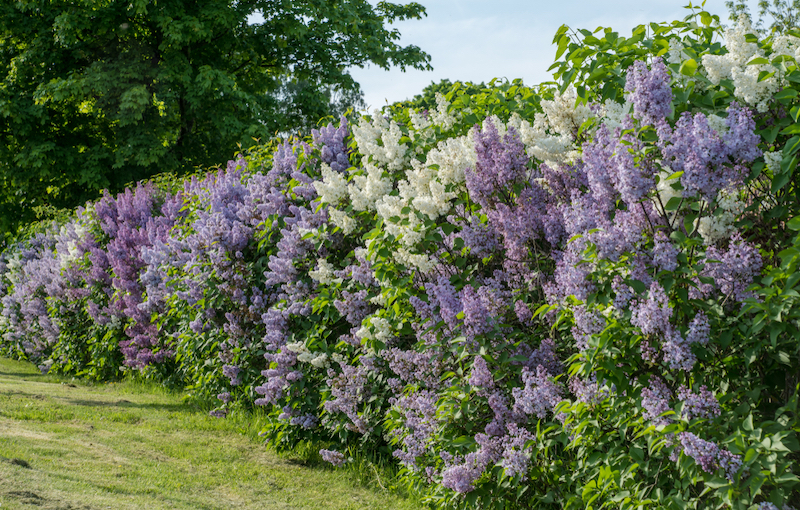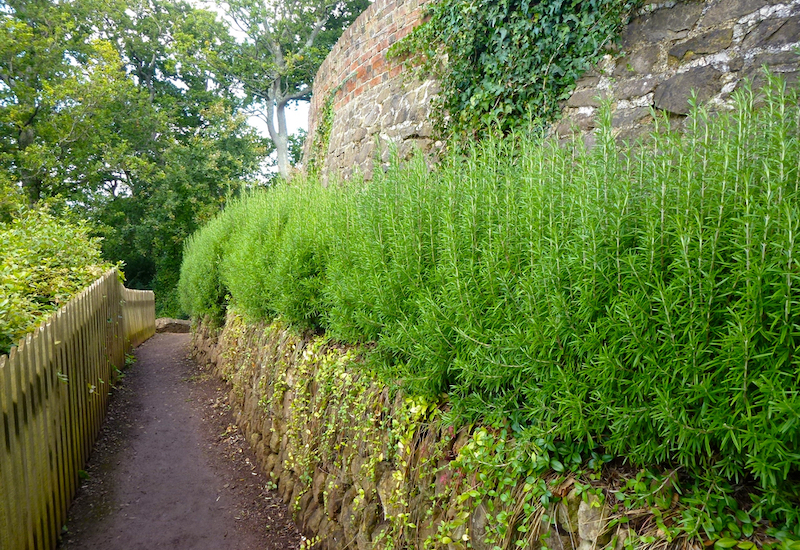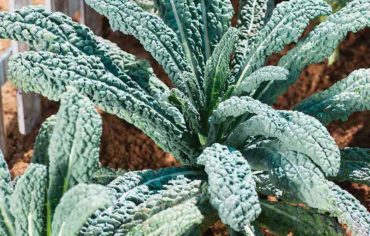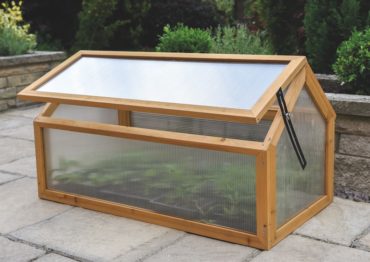Almost any small tree or shrub can be used to form a hedge, especially those varieties that respond well to pruning and shaping. Privet and laurel are some of the most commonly used hedging plants but, if you’re looking for something a bit different, here are five ideas to consider…
Growing a bay tree hedge
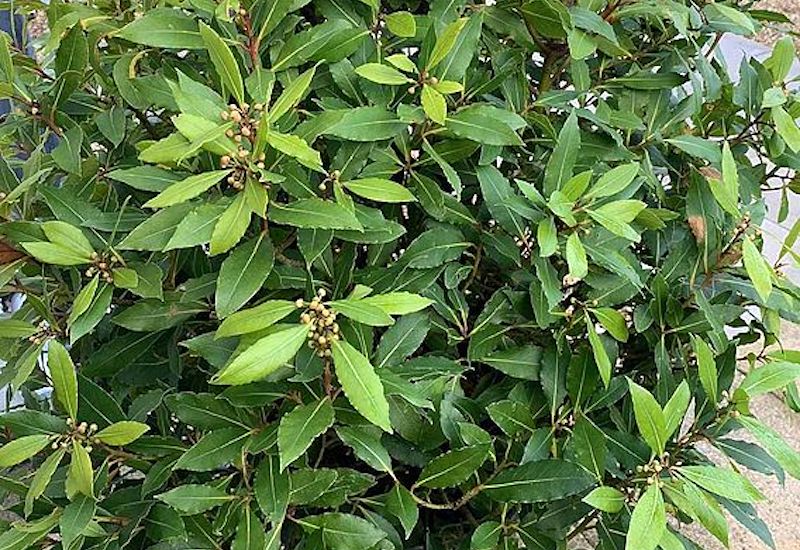
Image: Bay ‘Laurus nobilis’ from Suttons
The Bay Laurel, Laurus nobilis, is a bushy evergreen hedging plant that can be used to form a really tall hedge or kept to standard 6ft fence height if preferred. Its dark green, glossy foliage is beautifully aromatic, and pretty, pale yellow flowers appear from April to May.
Slow to grow, bay looks lovely when neatly clipped into a dense hedge. It keeps its shape well and can be used for more ornate topiary shapes should you choose to experiment! What’s more, the leaves are a welcome addition to many culinary dishes in the kitchen.
Foliage: Evergreen
Height: 2.5-7.5m (if not trained as a hedge)
Spread: 1-5m (if not trained as a hedge)
Growing a rosemary hedge
Another fragrant herb, Rosemary is an evergreen shrub that provides all year-round interest and works beautifully as a hedge. Rosemary ‘Miss Jessup’ is a vigorous RHS AGM variety that’s happy to be pruned.
Often used to line pathways or frame kitchen gardens, the long, thin, needle-like leaves release their scent when brushed against. Covered with clusters of purple flowers from late April to June, this is a hedge that bees will love. Simply clip it into shape after flowering, keeping the best stems for use in the kitchen.
Foliage: Evergreen
Height: 1.5-2m
Spread: 1-1.5m
Growing an amelanchier hedge
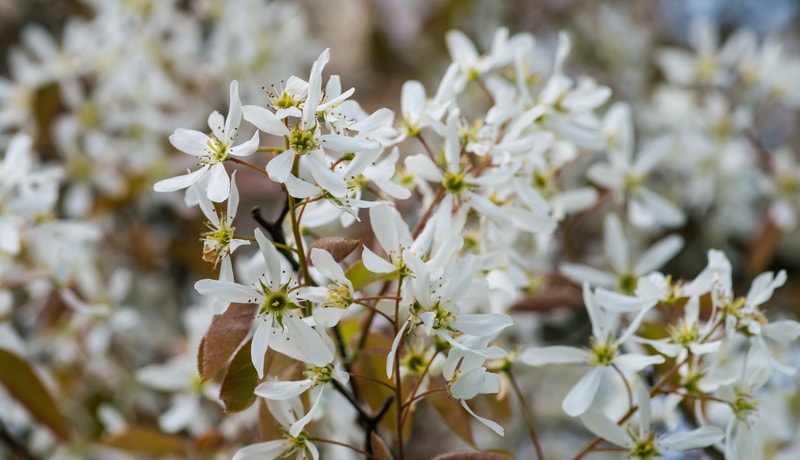
Image: Shutterstock
For a unique and ever-changing hedge, Amelanchier lamarckii is a great choice. A dense, compact cross between a shrub and a tree, it boasts lovely, white, star-shaped flowers in early spring and a spectacular show of leaf colour as the seasons change. Starting with bronze-tinged leaves in spring, the foliage turns dark green in summer before transforming to fiery orange and red in autumn. And for the birds, dark red berries appear late in summer.
Best trimmed during the dormant winter months, very little pruning is required other than removing dead branches. For best effect, maintain a height of about 1.5m.
Foliage: Deciduous
Height: 10m (if not trained as a hedge)
Spread: 6m (if not trained as a hedge)
Growing a lilac (Syringa) hedge
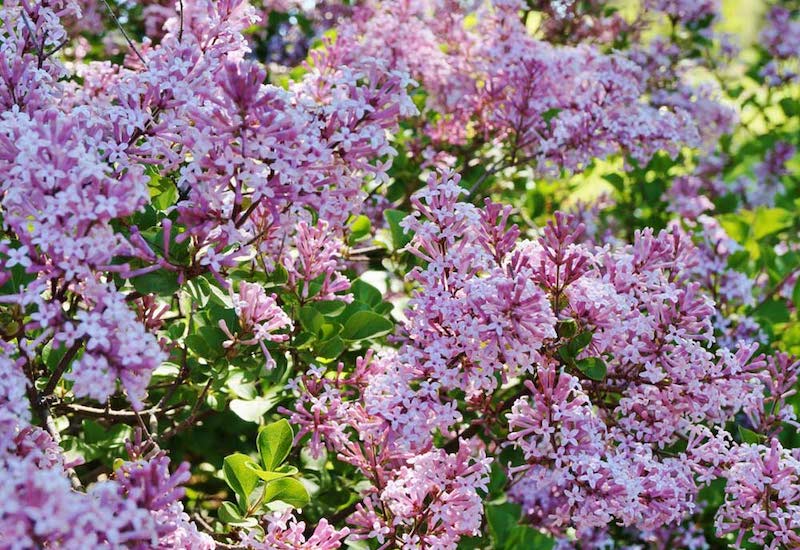
Image: Lilac ‘Pink Perfume’ from Suttons
Lilac (Syringa) bushes are ideal for wildlife gardens and make a beautifully fragrant hedge choice. Gloriously informal, a row of Lilac ‘Pink Perfume’ shrubs provides a wall of delicate pink and white flowers that bloom twice – from spring to summer, and again from late summer until the first frosts arrive.
‘Pink Perfume’ is a compact, mound-forming, lilac shrub which is easy to manage – so it won’t become unruly and out of control. The blooms can be cut for indoor arrangements and they’re loved by pollinators too. Keep it to a height of about 1.5m for the best display.
Foliage: Deciduous
Height: 1.8m (takes 10 years to mature)
Spread: 1-1.5m
Growing a pyracantha hedge
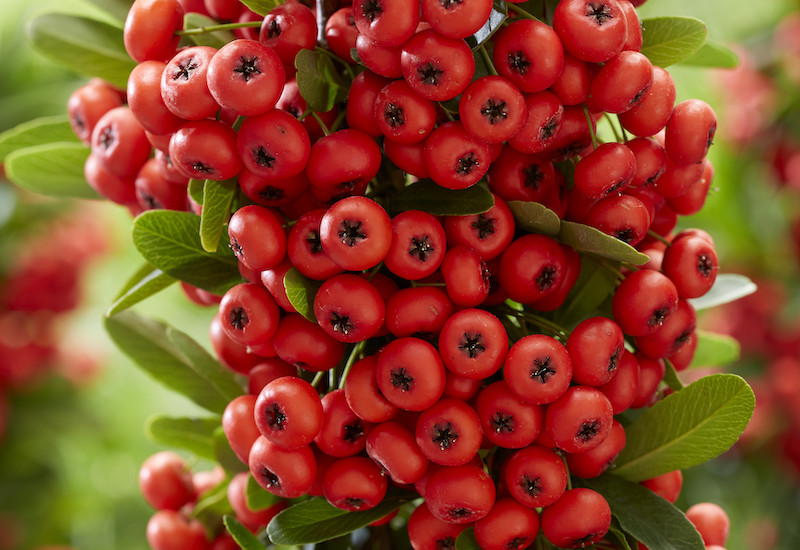
Image: Plantipp / Visions BV, Netherlands
Pyracantha is an evergreen shrub that’s extremely tough, tolerating all kinds of difficult growing conditions including shade and exposed positions. Glossy, elliptical leaves are the perfect backdrop for white flowers in August followed by a profusion of bright red berries that last well into winter. Spiny stems make it an effective security hedge that wildlife will love.
To keep your pyracantha hedge in check, prune it several times between spring and the end of summer. Tolerant of being cut back quite hard, don’t be afraid to use a pruning saw to thin older branches and increase air circulation if required. Cut to inward growing buds if you want to thicken your hedge up.
Foliage: Evergreen
Height: 2-2.5m
Spread: 2.5-3m
We hope we’ve given you some new ideas for hedging plants to try in your own garden or allotment. And if you don’t want the uniformity of a single variety, try planting a mixed hedge choosing a selection of native plants to support local wildlife.
Lead image: Shutterstock
Last Updated on November 8, 2024 by Suttons Horticultural Team

